Tips for Bringing Your Pet to the Vet for the First Time

Cover image source: Lydia Torrey on Unsplash
Whether you have a pet cat or dog, you will be making plenty of trips to the vet throughout your furry friend’s life. This is because cats and dogs require (at least) annual veterinary checks, as well as vaccinations, desexing procedures, and dental care, which all requires paying a vet a visit.
However, a veterinary visit can be a stressful experience for many pets, especially cats, and even more so if it is their first time. To reduce the stress and make it as positive as possible, here’s what you can do!
For your canine’s comfort
Before we dive into what you should do to prepare your pooch for its first trip to the veterinary clinic, you must first know what are a dog’s stress triggers to understand the reasoning behind the recommended actions. These triggers include unfamiliar smells, new surroundings, and car rides.
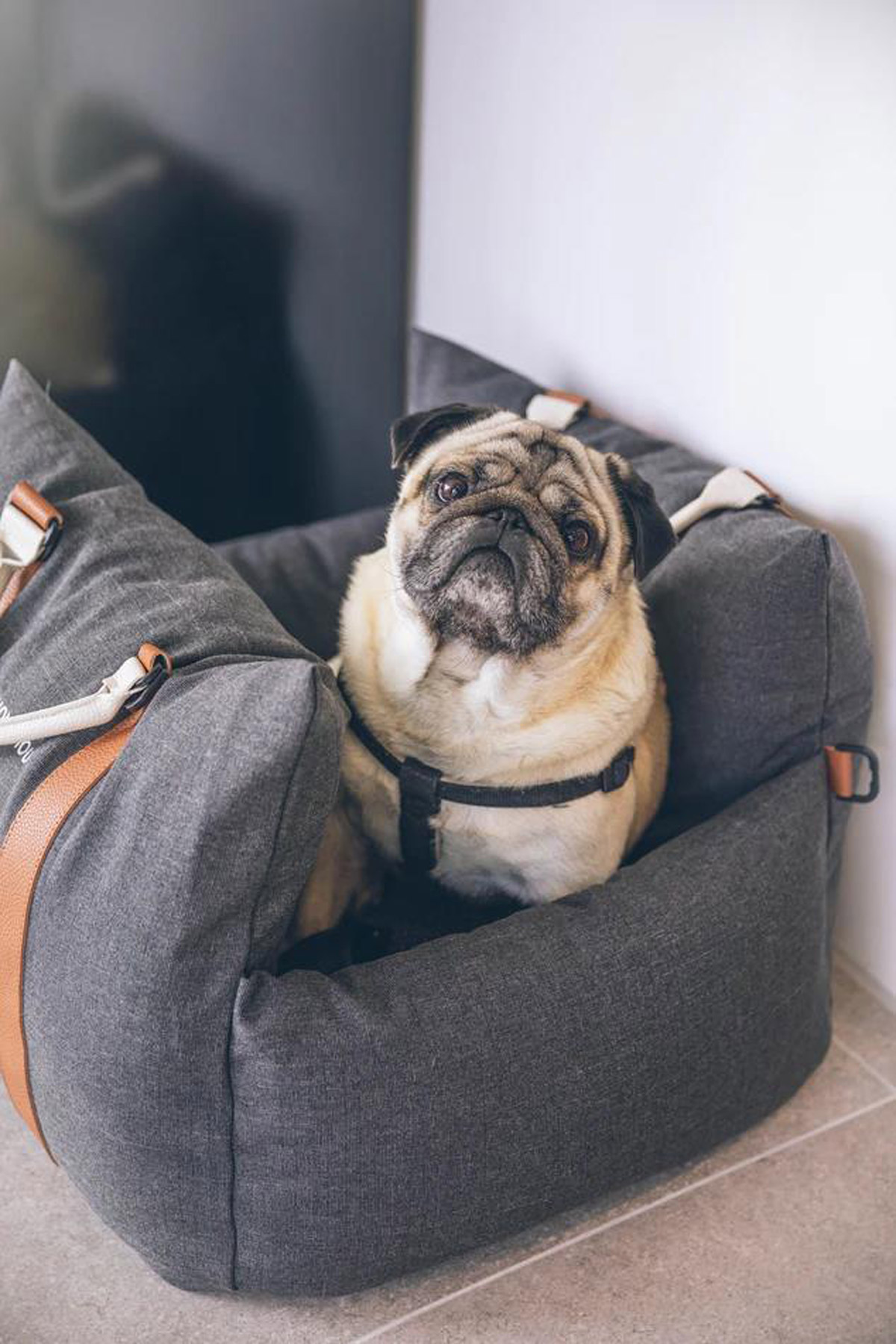
Source: FLOUFFY on Unsplash
Before the visit:
- Unless you are of walking distance from the veterinary clinic, you should always accustom your dog to car travel.
- For safety, invest in a crate or an approved canine harness restraint for your dog when it is in the car!
- Dogs can get motion sickness, so gradually build up their tolerance by taking short trips to a pleasant location such as a nearby park and provide a reward when you reach your destination to associate the car ride with a good experience!
- Signs of motion sickness in your dog include excessive drooling, smacking or licking lips, and vomiting, so keep a close eye for these symptoms to know when to stop the car ride.
- When scheduling your first visit, inform the receptionist that you wish to introduce your dog to the veterinary clinic before its medical appointment.
- This way, you may be able to get an appointment at a time when the clinic is less busy so that your pup will not feel as overwhelmed when it enters for the first time!
- Call the clinic beforehand to find out if you need to prepare anything to make the experience more pleasant for your pet. For example, collecting a stool sample so that it does not have to be done at the clinic.
- Before the actual veterinary visit, take your dog for a walk to expend some excess energy. This will help your dog to behave more calmly at the clinic.
The journey to the clinic (and the return journey):
- If your dog is small enough, consider bringing it to the veterinary clinic in a carrier! This will not only protect him from other pets and vice versa, but also provide a sense of comfort and security for your pet.
- Line the carrier with its favourite blanket or toy — the sense of familiarity will help keep it calm.
- To help further reduce the anxiety from unfamiliar sights and smell, you may cover the carrier with the blanket until the vet is ready to examine your dog.
- If you’re going to the veterinary clinic in a car, place the carrier on a towel or padding to keep it level and to absorb potential ‘accidents’! Make sure to secure the carrier in a footwell or with a seatbelt so that it cannot slide around.
- If driving, drive carefully and gently so that your pet won’t fall about.
- Stay calm so that your dog doesn’t pick up stress from you! Always talk in a soft and reassuring tone.
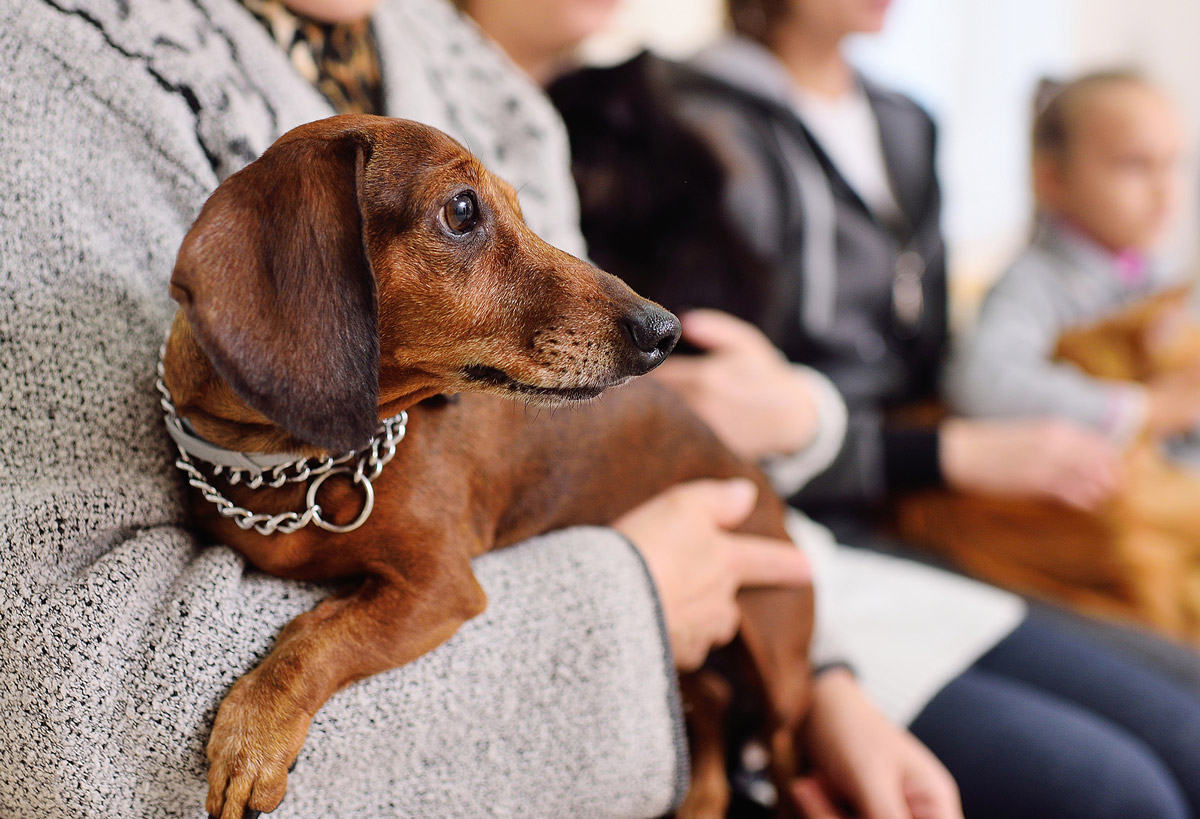
At the clinic:
- For the safety of your pet and other pets, it’s very important to have your dog on a short non-retractable leash or in a carrier.
- When a dog is frightened it might try and run away from whatever is frightening it, so having it safe and secure in a carrier or a well-fitting harness with a leash attached can help to prevent issues.
- If your dog is nervous or anxious, leave it in its crate or carrier to limit its interaction with other animals and give it a sense of security.
- Find a quiet corner to wait for your turn.
- If you notice that your dog is still very stressed, keep it in your car until the vet is ready to see you both!
- Keep your dog calm in the waiting area instead of letting it frantically sniff at other animals! Ideally, your pet should be by your side or on your lap.
- You may pet your pooch frequently and talk to it in calm, soft tones to keep it relaxed and reassured.
- Try positioning your dog so that other animals are not in its direct line of vision as well.
- Treats can be a very effective way to change your dog’s emotional and mental state, so make sure to keep some on hand to distract your dog and keep it happy throughout the visit to create a positive association with the clinic.
- To avoid over-feeding your dog, do not feed your pet before the appointment.
- To help eliminate some of your stress, it may be ideal to bring another person with you to the visit. One of you can handle the dog while the other can take care of administrative stuff like checking-in and paying the bills.
- Discuss with your vet on ways to make your next visit even more comfortable for both you and your dog!
Upon reaching home:
- Some dogs may be disorientated upon returning home — talk to them and stroke them gently, use calming pheromone products to further reassure and comfort them, and let them initiate closer contact whenever they are ready.
- If you have other pets at home, it is best to re-introduce your dog gently to the household because it would have picked up unfamiliar scents while at the clinic that may stir curiosity or anxiety in the other pets!
- Keep them apart initially so that the returning dog can pick up the familiar smells of home first, and so that they only interact when both parties are calm.
- Make sure that you are present to assess the response when your pets are re-introduced.
For your feline’s feelings
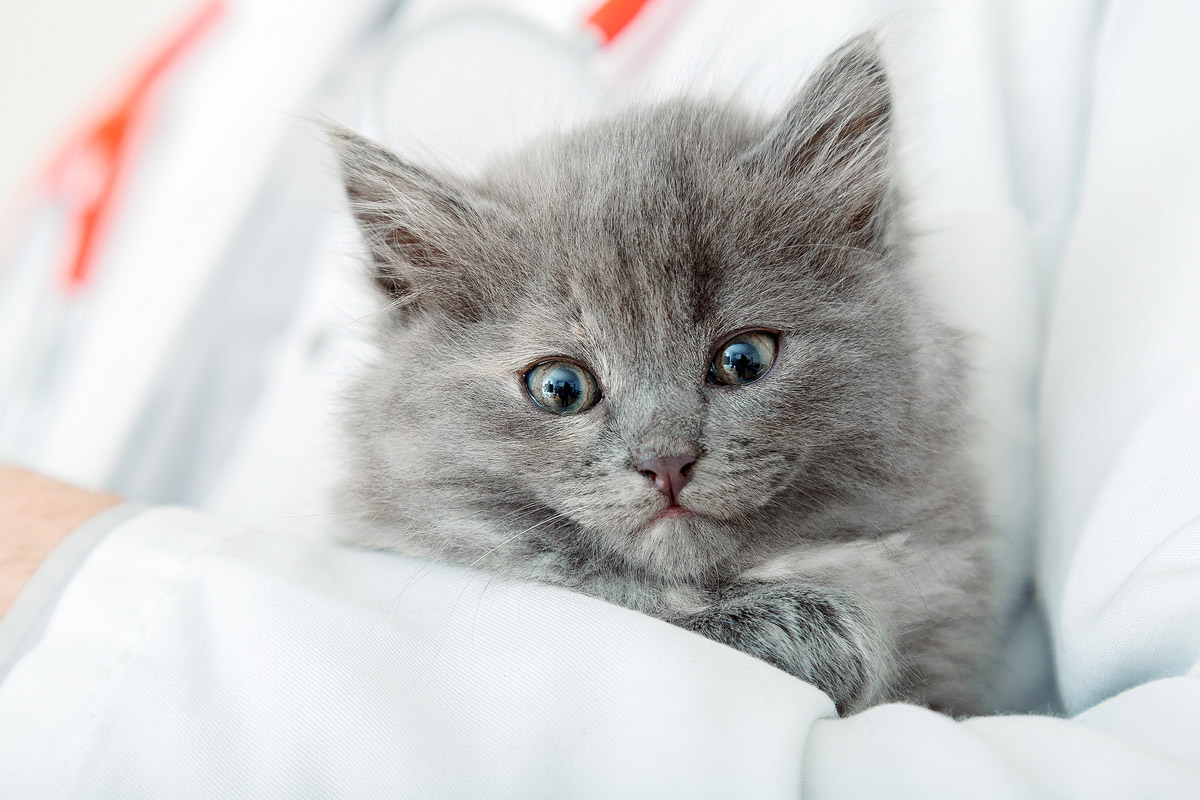
Again, before we delve into how you can prepare your cat for its first trip to the veterinary clinic, you must first know what are a feline’s stress triggers in order to understand the reasoning behind the recommended actions. These triggers include removal from familiar surroundings, unfamiliar smells, sounds, and surroundings, and car rides.
Before the visit:
- To ensure your cat’s safety, a carrier is necessary for transportation! A carrier also provides your kitty with a sense of security.
- A top-loading carrier will make it easier for the clinic staff to get your cat out for examination, thereby causing less stress to your cat. Having a carrier that opens from the top also allows your cat to be examined while it is in the carrier, which will reduce its stress levels.
- The carrier should not be large enough for your cat to fall about in it.
- Acclimatise your cat to the carrier a few weeks before the veterinary visit!
- To get your cat used to the presence of the carrier first, open up the carrier door so your cat can inspect it leisurely.
- Place the carrier within your home’s everyday environment.
- Sprinkle some catnip and treats in the carrier once a day to entice your cat to enter on its own accord.
- Add your cat’s favourite blanket, toys, or bed in the carrier to make it more comfortable and inviting for your cat and keep them inside once your cat enters!
- Gradually make the carrier part of your home’s furniture at a place where your cat likes to sleep at or is fed.
- You may spritz some Feliway into the carrier or on the carrier cover at least 15 minutes before you place your cat in it for the trip to the veterinary clinic.
- Feliway is a natural cat calming pheromone that is very effective for calming cats!
- Don’t limit car rides to visits to the vet — take your kitty on regular rides in the carrier to help it get used to the motion and the surroundings of your vehicle!
- Motion sickness in cats is a common problem and is caused primarily by the stress and anxiety associated with travel.
- In order for your cat to overcome their anxiety, it is important to acclimatise your cat to the carrier and the car before gradually conditioning your cat to car rides.
- When scheduling your first visit, inform the receptionist that you wish to introduce your cat to the veterinary clinic before its medical appointment.
- This way, you may be able to get an appointment at a time when the clinic is less busy so that your cat will not feel overwhelmed by a multitude of unfamiliar sights, smells, and sounds when it enters for the first time!
- Call the clinic beforehand to find out if you need to prepare anything to make the experience more pleasant for your pet. For example, collecting a stool sample so that it does not have to be done at the clinic.
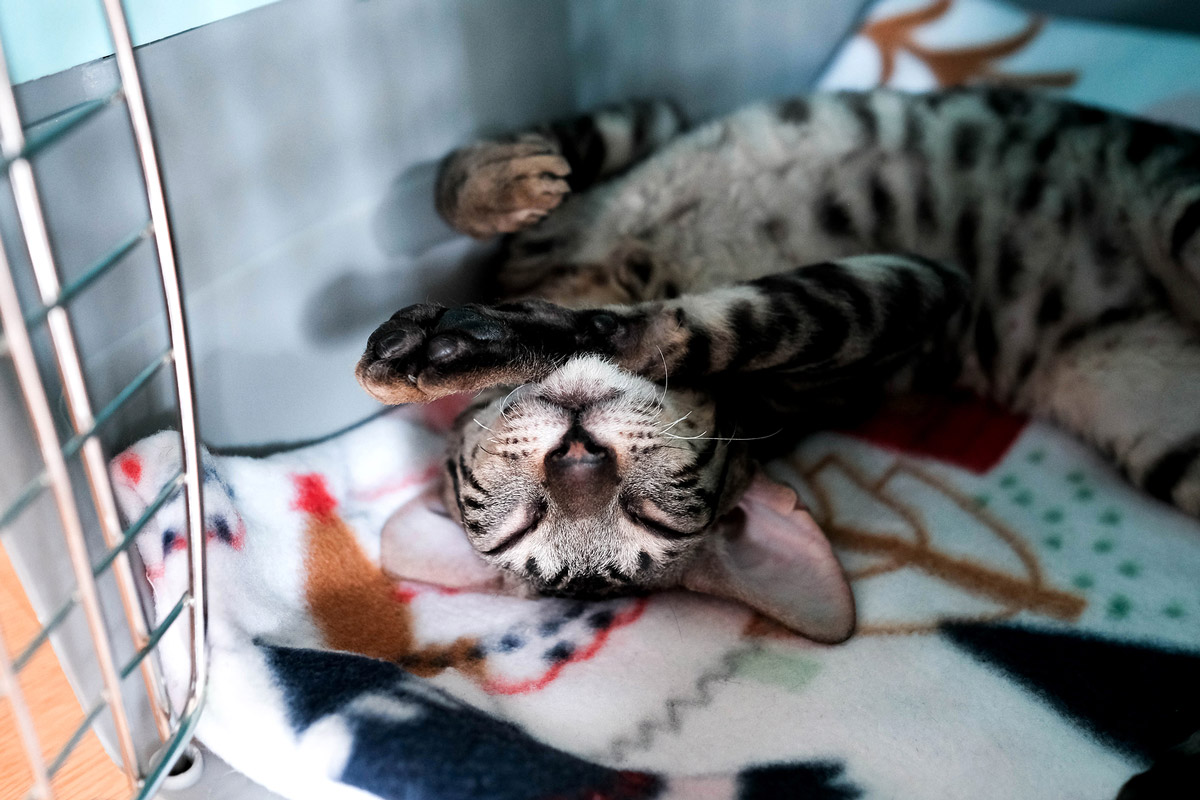
The journey to the clinic (and the return journey):
- Before travelling with your cat, cover the cat carrier with your cat’s favourite blanket.
- This will help reduce the anxiety from unfamiliar sights and smells.
- Put something that smells of you in the carrier.
- Place the carrier on a towel or padding to keep it level in the car and to absorb ‘accidents’.
- Secure the carrier in the car in a footwell or with a seatbelt so that it cannot move around.
- Drive carefully and gently to avoid your cat being thrown around.
- Stay calm so that your cat doesn’t pick up any stress from you.
- Be reassuring, talk in a calm and gentle tone, and avoid loud noises.
At the clinic:
- Choose a quiet location to wait for your turn and keep the cat carrier covered to avoid visual contact with other animals at the clinic.
- Hold the carrier on your lap and talk to your cat in a soothing voice.
- If your cat becomes very stressed, consider keeping it in the car until your vet is ready to see you.
- Make sure to discuss with your vet about ways to make your next visit even more comfortable for both you and your cat!
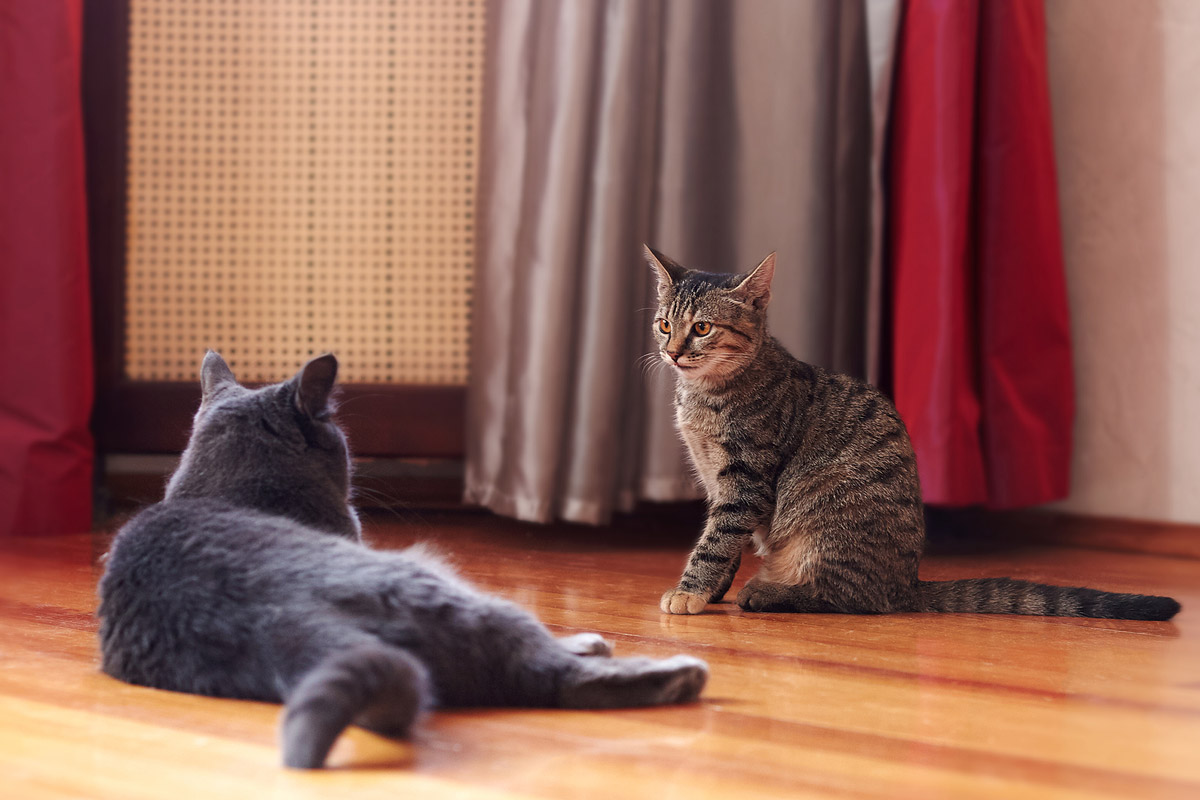
Upon reaching home:
- Cats may be nervous and disorientated upon returning home — talk to your kitty and stroke or groom it gently, use the synthetic cat pheromone Feliway to add reassurance and security to your home, and allow your cat to initiate closer contact whenever it is ready. Do not force your cat to do so otherwise!
- Your cat will have picked up unfamiliar scents while at the clinic. If you have other cats at home, the smells may provoke anxiety in them, so it is best to re-introduce the returning cat gently.
- Keep the cats apart initially so that the returning cat can pick up the familiar smells of home.
- Make sure you are present to assess the response when the cats are re-introduced.
- If needed, keep your cats in separate rooms for a few hours or a day or two before allowing some gradual and supervised contact!
General tips:
- Always speak in a soft voice to help your cat remain calm.
- Don’t feed your cat before the veterinary visit as a precaution against motion sickness during the journey!
- A hungry cat will also allow the veterinary team to use treats to make it feel less frightened.
- Ask your vet to teach you how to do a ‘pretend’ clinical examination so that the procedure is not unfamiliar when the vet does it.
- If the first visit was very stressful for your cat, ask the vet for gabapentin (a prescription drug). It is an effective, gentle, and safe sedative for cats.
- Give your cat the prescribed dose one to two hours before the vet appointment.
- Choose a cat-friendly clinic! Accredited Cat-Friendly Clinics have interiors designed to calm the cat, staff trained to handle cats in a manner that de-escalates their stress, and has vets who are up-to-date in their knowledge of feline medicine and uses the latest diagnostic tests and protocols to give you the best outcome possible.
- The Cat Clinic is an ISFM Cat Friendly Clinic that is highly-raved and supported by many cat owners here in Singapore. The first-ever cat-dedicated clinic on our shores, The Cat Clinic is a branch of The Animal Clinic, which specialises in the healthcare of cats, dogs, small mammals, birds, and reptiles.
- Read more about the benefits of bringing your cat to a Cat-Friendly Clinic here!
This article was written in consultation with Dr Lennie from The Animal Clinic, an AVS-registered veterinary clinic that has been caring for pets since 1979 with senior veterinarians that have a combined experience of more than 75 years of clinical practice.
For more pet-related enquiries, leave a direct message on The Animal Clinic’s Facebook page and get a response within 24 hours. For medical advice, The Animal Clinic also provides telehealth services at https://animalclinicsg.smart.vet/.








